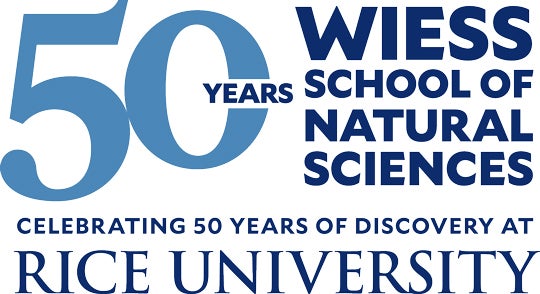Chemistry alumnus Dayne Swearer ’19 learned to tackle big problems as a Ph.D. student at Rice, and he’s passing those lessons on to his own students at Northwestern University.

“I took a particular flavor of the chemistry and the problem-solving that I developed at Rice in Naomi Halas’ lab,” he said. “She taught me how to think about the big picture.”
Swearer’s time in Houston gave him a firsthand look at the chemical industry and an appreciation for society’s reliance on oil and gas for not only energy, but countless everyday products. That was front-of-mind in 2022 when he established the goals for his own research group as a new assistant professor of both chemistry and chemical and biological engineering.
“What has translated over from my time at Rice is the idea of using renewable energy to try to make all the materials and molecules that we need for society to continue to run smoothly,” he said.
Swearer encourages his students to target important problems, approach them from multiple directions and be mindful of unexpected solutions. For the latter, he can cite his own experience as a graduate student in 2016: his most important discovery at Rice — antenna-reactor nanoparticles — wasn’t immediately obvious because it resulted from a failed control experiment.
“I initially got the result I was hoping for, but then it still happened when I ran my control experiments!” he said. He recalled his initial disappointment when the experiment failed, and the ‘Aha!’ moment he experienced later during a conversation with Halas about the nanoparticles he had accidentally synthesized.
Antenna-reactor catalysts can harvest energy from light and insert it into chemical reactions with surgical precision. That potential was born out in subsequent studies that demonstrated antenna-reactors can dramatically improve the efficiency of some of the chemical industry’s most energy-intensive processes.
“It turned out that even though my initial hypothesis was unproven, the unexpected result was even more significant,” Swearer said. “I think that the shift in perspective, as a scientist, can actually be quite important. Because if you’re looking really, really hard for something, and you don’t find it, you might miss the forest amongst the trees.”

He also teaches his students the importance of being able to explain their work with general audiences. That lesson came from a 2016 Rice press release about the antenna-reactor discovery, which sparked the interest of two Houston entrepreneurs who would eventually license the technology from Rice and launch a startup company, Syzygy Plasmonics, that today has 125 employees.
“It could have been just another scientific paper,” Swearer said. “Instead, it is now something that has the potential to impact the way we think about doing chemistry in the future. That happened because of sharing our work with the public.”
In terms of training students to become scientists, Swearer said he takes a holistic approach that grew from his experience in the Smalley Curl Institute’s Student Training for Advising Research, or SCI STAR program.
“I tend not to say, go in the lab and do experiments A, B and C, and come back when you’re done,” he said. “I try to train students to think about the big problem and really try to solve it on their own. Regardless of whether they go into academia, industry, or even a non-technical field, in the end, it’s problem-solving and being able to articulate why a particular solution has the potential to make a difference that will move the needle in their career.”

